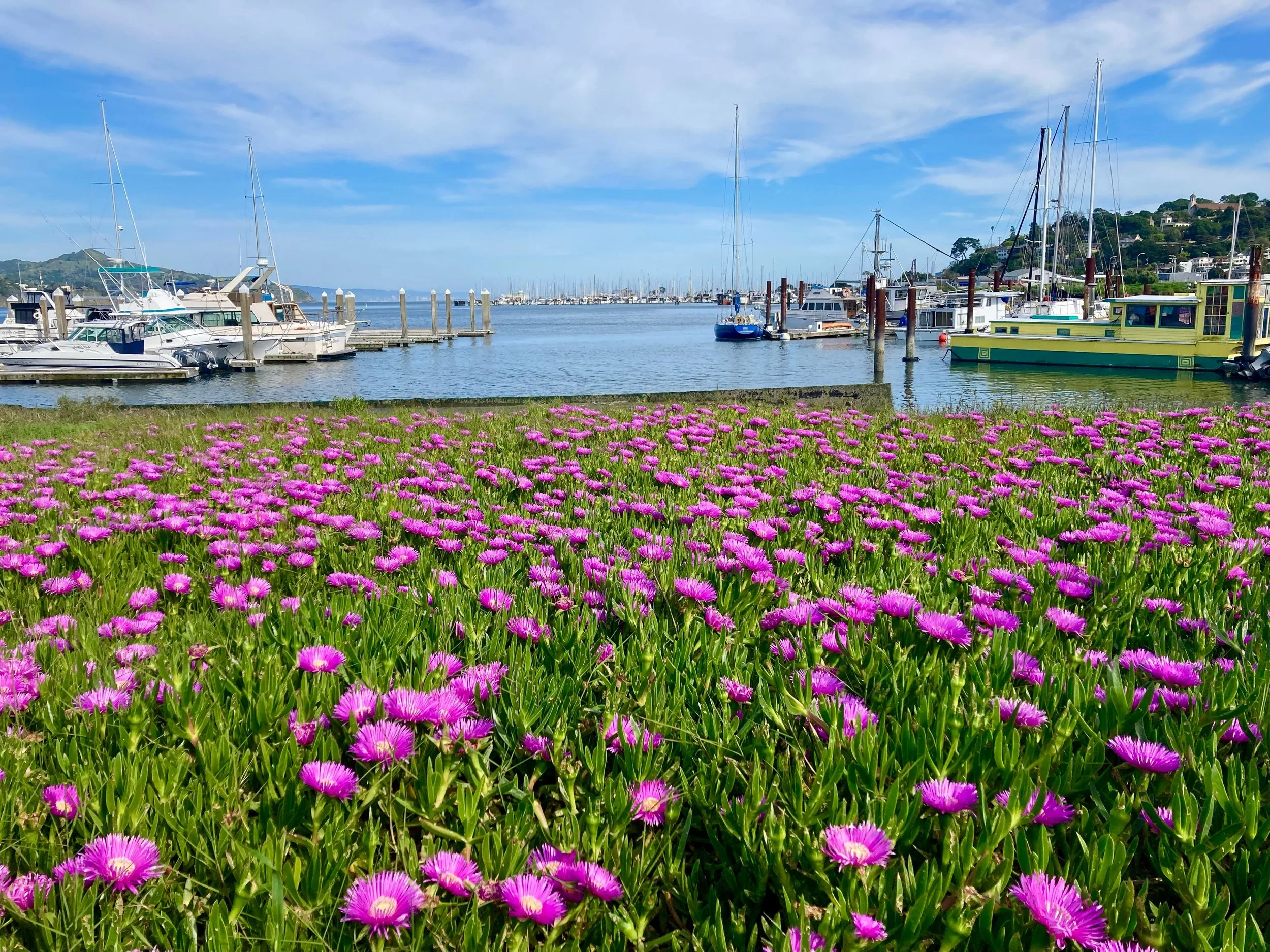Coming Home
Midway through a session on a foggy morning in Sausalito, one of my clients asked me: “Why do you coach?” I contemplated his question, falling into silence. Outside, the clouds floated across the peak of Mount Tamalpais. Swirls of fog encased its ridges in wispy white tendrils. Feeling the warmth of the cup of tea in my hands, I sensed inside, waiting for an answer. Out of the stillness it came. “It’s simple,” I said, “When I coach, I come home to myself.”
Our conversation sparked my interest in exploring this more. What does it mean to come home to oneself?
In a visceral sense, for me, it is a feeling of emplacement, of being where you belong. I access it most powerfully when I am by the water. I grew up on an island and the water brings me home. In Sausalito, where I live, I see the water everywhere. Richardson Bay spans the town, flowing towards the marshlands framed by Mount Tamalpais on one side and under the Golden Gate Bridge towards the Pacific Ocean on the other. It appears and disappears through gaps between buildings downtown, shimmering in the sunlight. From my kitchen window, it fans out like a blue mirror behind the shrubs of Pride of Madeira blooming in the garden, their purple cones rising skyward, growing towards the light.
Angel Island | Photo by Author
Most evenings, as the golden hour approaches, I go to a nearby harbor. There is a small beach, ringed by docks, where the water flows in from the bay. I know it in many of its moods. On blustery days, the wind howls past the sailboats, masts clanging in an unruly orchestra. During a herring run, the birds come. Hundreds of cormorants swirl above the water, flying in circles in a cloud of black wings moving in sync. Pelicans fly high and drive, plummeting from fifty feet above into the water. Seals bob up and down. As I take in all of this, everything slows down. My senses open. I come into my body, relaxing into the sunshine on my skin. No matter what is unfolding in my life, in this place, all the stresses melt: that which was fragmented becomes whole, stitching itself back together again. There is a sense of homecoming.
It is a strange intimacy I feel with the place and with myself in the place. A line in a poem by Tagore comes to mind: “On the shores of endless worlds, children play.” Jessica Benjamin, a feminist psychoanalyst, reflects that this poem evokes how we can at once feel the boundary of our individual selves and a sense of boundless possibility. For me, it captures the experience of being anchored within and connected to a wider world.
Schoonmaker Point Marina | Photo by Robert Foster
For me, this intimacy with a place has a particular quality of beauty when it is shared. I often visit the harbor with a friend. As we walk, we talk. As we sit, we take in the unfolding drama in silence. It is a familiar way of being together for us; our friendship formed while meditating in each other’s company. As we take in the changing light, the swooping birds, the sailboats gliding along the water while sitting beside each other in silence, we access a particular quality of togetherness that emerges without words. To be silent with someone this way is to feel safe to inhabit one's experience and share it without building a bridge between worlds with words. Again, I sense a homecoming. The thought often comes: when I sit in this place, with this person, who knows me in this way, I feel most like myself.
Schoonmaker Point Marina | Photo by Robert Foster
Returning to my client’s question about why I coach, I access this same feeling of homecoming when I work. I leave each coaching call with a sense of wonder at how listening for what lies underneath the places of stuckness enables movement.
As Marx wrote, while alienating work estranges us from ourselves, enlivening work brings us back in. It reconnects us with who we are. When we access a sense of congruence between ourselves and what we do, we experience a feeling of alignment, a kind of clicking into place. Even amidst unwieldy projects that feel impossible to actualize, these moments of alignment arrive like a beam that cuts through the fog. When my clients find such instances in their work, I often hear them draw a breath of relief: “This feels right.”
This sense of “yes” tends to be subtle. It comes as a whisper from a place inside ourselves. It often goes against the grain of what we have been socialized to think we should do. Finding that soft voice and giving ourselves permission to listen to it takes time. We forget. We get pulled out of ourselves. We come back and remember what it is like to feel aligned.
It is this alignment that I look for as I coach. My clients and I dive underneath their fears and self-doubt and find the experiences where they feel lit up in an organic, almost effortless way. I help them access these experiences and return to them when they forget. Slowly, I see them cultivate a sense of self-trust. As they do, their unique gifts begin to shine through. It draws towards them people and communities that value these gifts. Their attunement to themselves becomes a compass through which they navigate their way to work they love. As they follow this path in incremental steps, horizons open, leading them to build lives in which they feel at home in themselves.



